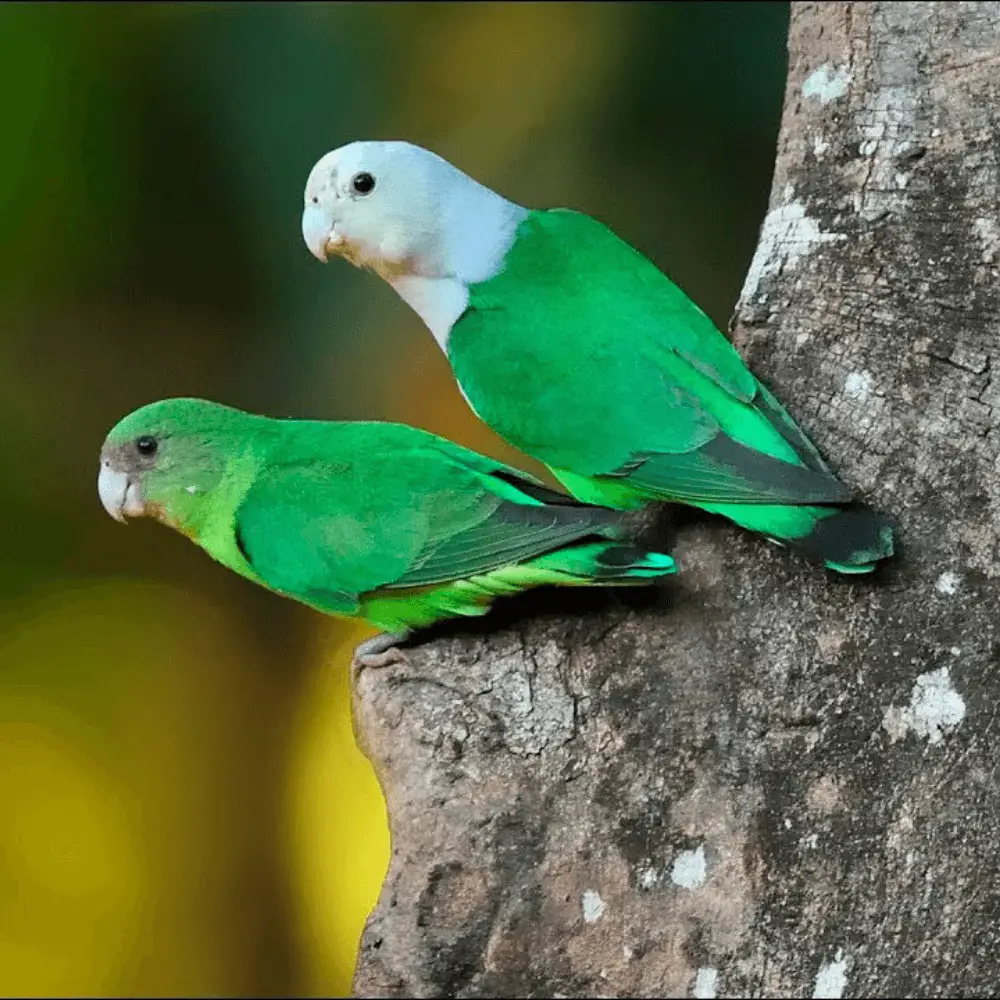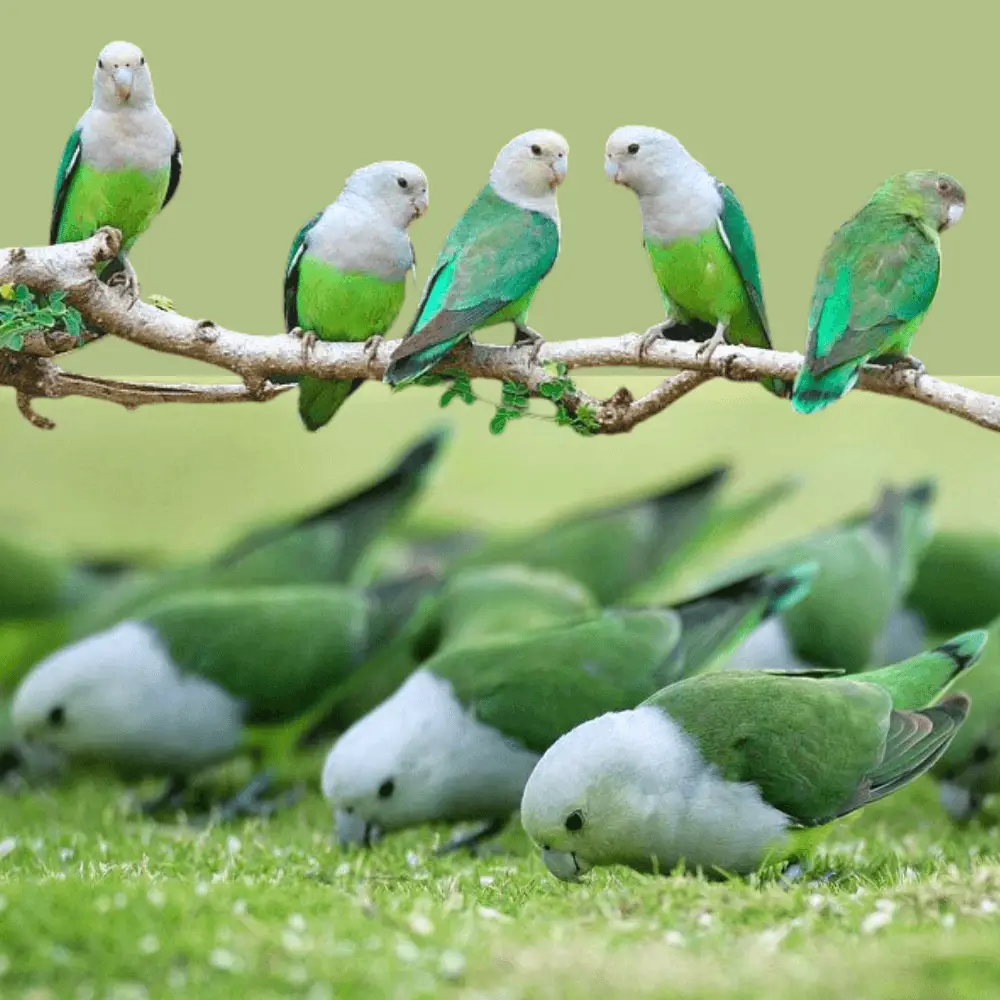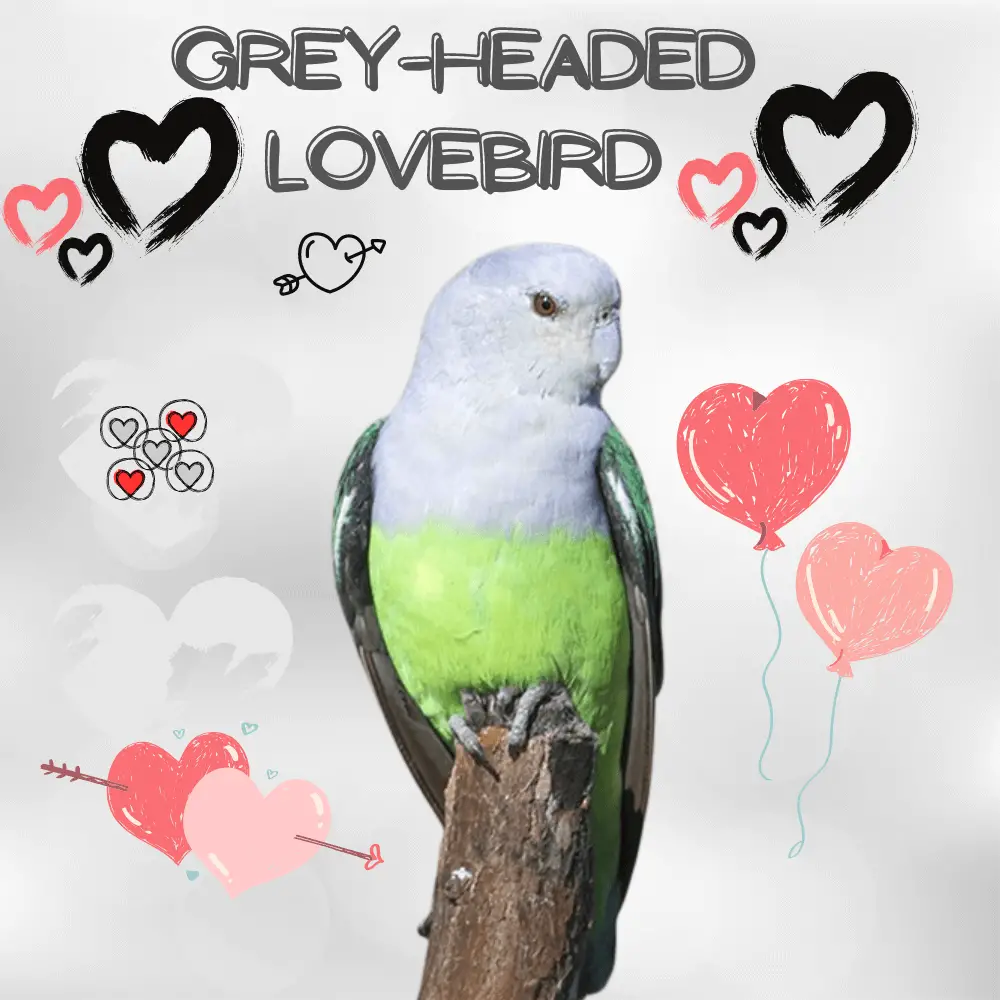Grey-headed Lovebird or Madagascar lovebird: Have you decided to take this lovebird into your care? It is always necessary to think carefully before hosting a gray lovebird. Because… well, because it’s one of the best in the world. When you know a little more about him, you will surely fall in love.
Did you know that the Agapornis Canus have a very difficult adaptation to life at home, they are very nervous birds and very sensitive to stress, in captivity, it is difficult for them to have young. This is why it is not very advisable to have it as an exotic pet.
In fact, very little data on its origin can be found in books. It is a lovebird native to Madagascar, and It lives both in palm fields and in jungles, as well as in rice fields, in cut forests some specimens can even be found in some cities.
Although it is quite beautiful, the truth is that it is one of the least sought-after variants to be kept in captivity, despite the fact that it is a common animal to capture and sell in stores.
Subspecies
It should be noted that within the species Agapornis Cana there are two subspecies, which are
- Agapornis canus canus (Gmelin)
- Agapornis canus ablectaneus (Bangs)
However, there are no known mutations of any kind, which is something special within this genus, since usually, each species has different mutations, which change the color of its plumage.
What are the characteristics of a Grey-headed Lovebird?

It is a small bird, reaching a maximum size of 13 centimeters, and its weight is usually between 30 to 36 grams, which makes it one of the smallest variants of this species.
The base color is green, being more intense at the rear of the body and yellowing as it approaches the belly. Its head, chest, and nape have a whitish-gray tone, which gives this bird its name, although this color may have yellowish tones.
His wings are white in the main shirt, standing out against the bright green of the rest of his body. The lower part of the wing, which is visible only in flight, is of a blackish-brown hue, while its tail is green. The wings have a yellow band, very characteristic of this animal. Unlike other lovebirds, its iris is brown, while its beak and legs are grey.
It is not difficult to differentiate the male from the female, since the adult female has no gray markings, and the coloration of the hidden part of the wing is green or brownish-black n. When young, they are very similar to adults, except the colors are subdued, with a greenish-gray or whitish nape that changes color as the bird grows.
Grey-headed lovebird care guide

It is not an impossible challenge to have a gray lovebird in captivity, although many providers do not trade with them. For example, if you want to have this bird for breeding, you need to know that the main key is in the diet.
During the months when they are not in heat, they should be fed dry seeds, such as finches and millet, along with a piece of fruit. But in the breeding season, you need to feed it with a mixture of finches, sprouted seeds, and a little egg paste.
The measurements of the nest are very important because there the mother will spend more time with the young. This should be at least 18cm long by 13cm wide and 14cm high, looking for it to have an L-shape, which makes it more comfortable for laying and hatching.
What should the cage look like? In fact, a normal cage, 60 cm long and about 50 or 60 centimeters high, would suffice. . It is recommended that the floor of the cage be covered with sand, so that it is easier to clean, and the thickness of the bars of the cage does not exceed one centimeter. It’s also worth remembering that lovebirds don’t like oval or house-shaped cages very much, so look for a rectangular or square cage. You don’t need to fill the cage with lots of toys.
When it comes to taking him out of the cage because the lovebirds don’t cause many trust issues with humans, although they aren’t as affectionate as other variants of the species. Before removing it from the cage, you need to get used to climbing on your finger. On the first day in freedom, it is advisable to close the door to the room and the windows, so that it does not escape, placing in the cage the foods that you like the most. You will come back to it when you are hungry.
Where do Grey-headed Lovebird live?
The Lovebird is typical of the African continent, like the other species of birds that belong to this genus; having its roots mainly in Madagascar. The natural environment of the Agapornis Cana consists of the arid areas of its native country, which means that it remains below 1000 meters in height.
What eats Grey-headed Lovebird?
The diet of Agapornis Canus in nature is based on fruits, berries, corn, millet (cereal), green seeds, and sprouts. In captivity, it feeds on sprouted seeds, vegetables, fruits, and egg cakes.
How many years does a Grey-headed Lovebird have?
Agapornis Canus has a life expectancy of 8 to 10 years, in captivity, with a good diet it can live more than 10 years.
How does the Madagascar lovebird reproduce?
The reproduction of an Agapornis Canus takes place during the months of November to April.
The female Agapornis cana lays an average of four to six eggs, the incubation period is about 23 days, and the chicks leave the nest after 43 days. The father helps with breeding duties, including providing food for the chicks. In captivity, a wooden boxwood nest is the best option for breeding these beautiful birds.
SOURCE: Lovebird Valley
Related article:

